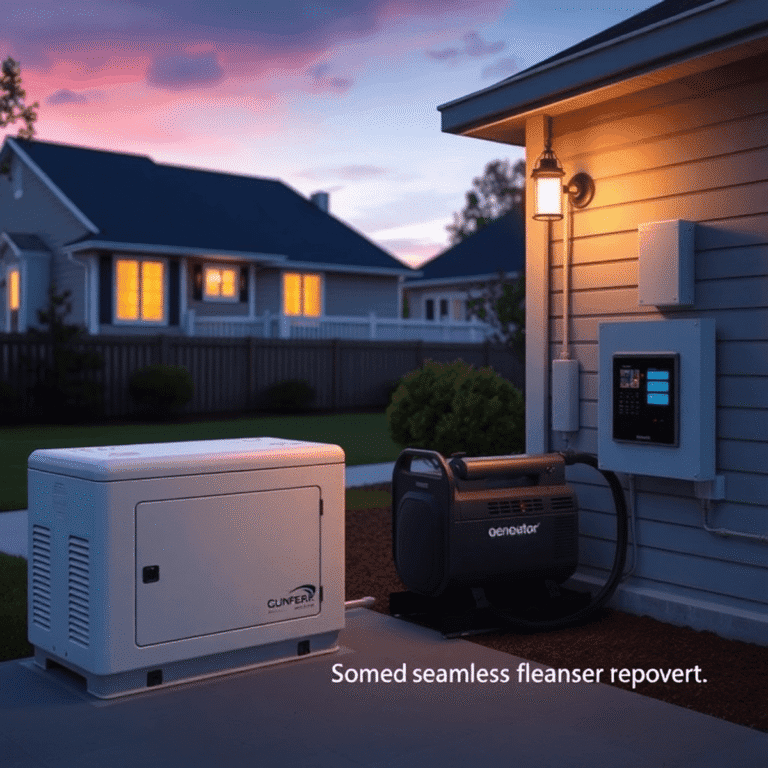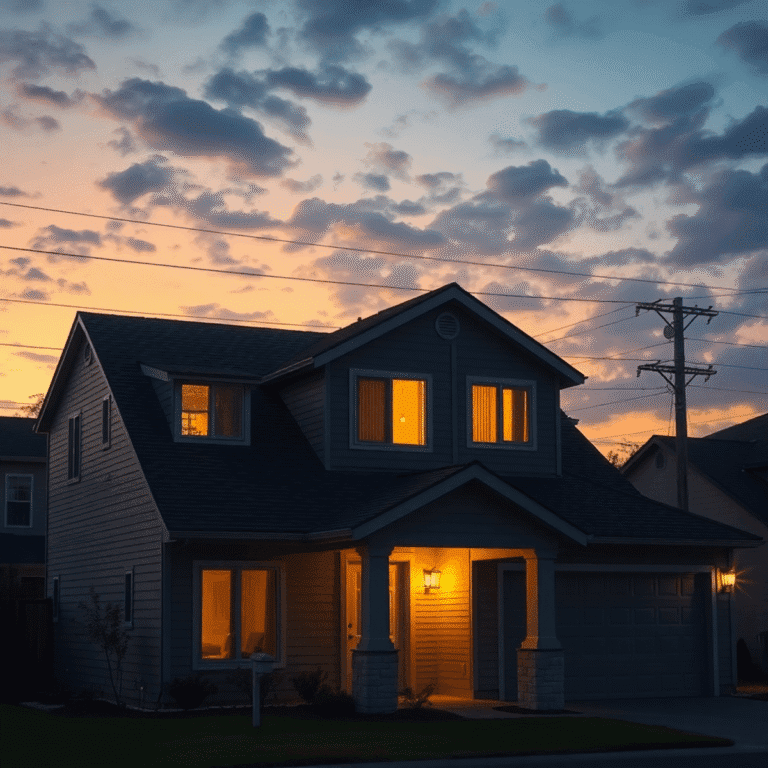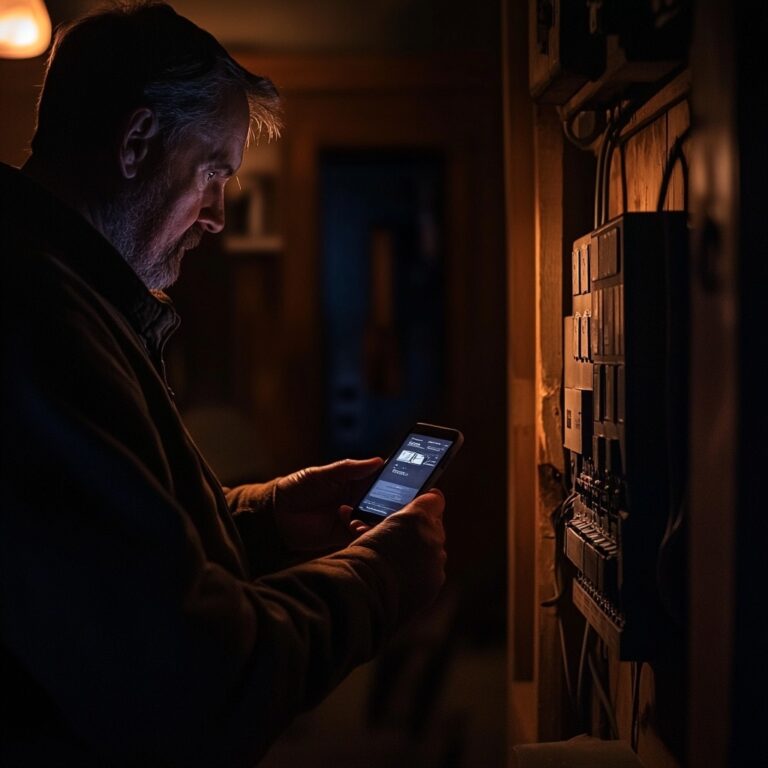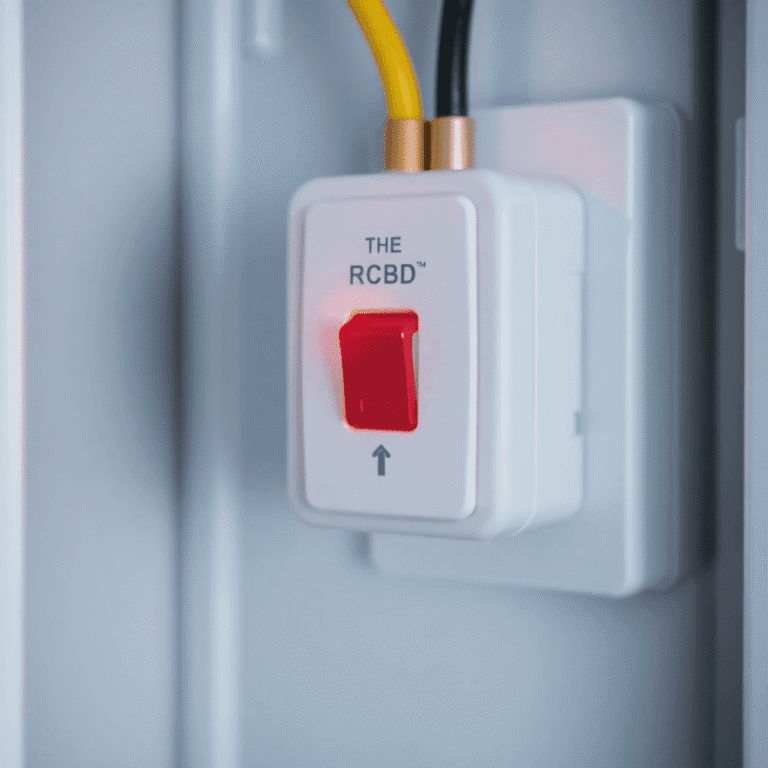Why Outdoor Wiring Needs Special Protection
Outdoor wiring faces challenges that indoor systems never encounter. Exposure to rain, UV rays, extreme temperatures, and physical hazards means electrical installations outside your home or business are at constant risk. This is why outdoor wiring needs special protection—it’s not just about functionality; it’s about keeping people and property safe.
In this article, you’ll learn:
- How environmental and physical risks threaten outdoor wiring safety
- Which protective materials and methods ensure long-term durability
- Key compliance requirements for outdoor electrical installations
- Why professional expertise makes a difference for safe, reliable results
By understanding these crucial elements, you’ll be equipped to make informed decisions about your property’s outdoor electrical systems—protecting both investment and peace of mind. If you’re seeking professional help with outdoor wiring safety, don’t hesitate to contact us for expert assistance.
Understanding Outdoor Wiring
What is outdoor wiring?
Outdoor electrical wiring refers to any cabling, conduit, or power distribution system installed outside a building. Unlike indoor wiring, these systems are designed to operate in open environments exposed to weather, temperature extremes, and potential physical hazards. The materials used must withstand direct sunlight, rain, dust, and other environmental pressures that simply do not affect indoor circuits.
How is outdoor wiring different from indoor wiring?
The key differences between outdoor and indoor wiring include:
- Use of cables and connectors rated for ultraviolet resistance and waterproofing.
- Installation inside special conduits or direct burial-rated cable sheaths.
- Enhanced insulation and protective measures to prevent degradation.
Where is outdoor wiring commonly used?
Outdoor electrical wiring has various applications in different settings:
In residential areas:
- Garden lighting
- Powering sheds or detached garages
- Swimming pool pumps and spa equipment
- Exterior power outlets for entertainment areas
In commercial spaces:
- Security lighting for car parks or building facades
- Power supply for signage or outdoor kiosks
- Cabling for CCTV cameras and perimeter security systems
In industrial locations:
- Heavy-duty circuits for machinery on loading docks
- Lighting and power for warehouses with exposed exterior zones
- Data cabling for access control systems at facility boundaries
Each scenario requires specific protection measures tailored to the challenges of that particular environment.
Environmental Challenges Facing Outdoor Wiring
Outdoor wiring faces constant exposure to the elements, creating a unique set of challenges not present in indoor environments. Weather exposure outdoor wiring is a constant concern for any installation outside the controlled climate of a building.
Weather Conditions and Their Effects
Rain and Moisture
Unprotected wiring exposed to rain is susceptible to corrosion, rust, and short circuits. Even sealed connections can fail if moisture seeps in over time.
Snow and Ice
Freeze-thaw cycles can cause conduits to crack and expand, exposing wires and leading to brittleness or breakage.
Sunlight (UV Radiation)
Prolonged sun exposure degrades insulation materials, making them brittle and prone to cracking. This increases the risk of shorts or electrical fires.
Temperature Fluctuations
Extreme heat causes expansion, while cold contracts materials. This repeated stress wears down cable jackets and can loosen fittings.
Moisture Damage in Electrical Wiring
Moisture damage electrical wiring is particularly insidious because it often goes unnoticed until a failure occurs.
Water infiltration accelerates metal oxidation inside cables, compromising conductivity and increasing resistance within the circuit. Over time, connections corrode, insulation deteriorates, and the risk of both shock hazards and fire increases dramatically.
Common failure points include buried splices that aren’t properly sealed, outdoor outlets lacking weatherproof covers, or junction boxes with insufficient drainage.
Material Selection Matters
Not all wiring materials are created equal when facing outdoor conditions. PVC-jacketed cables may resist water but degrade under UV rays; rubber-insulated wires handle temperature swings but may be vulnerable to abrasion. The choice must match environmental threats encountered in each installation site.
With these risks in mind, special protection strategies become essential for every outdoor project. Physical hazards also play a critical role in system longevity and safety.
Physical Risks to Outdoor Wiring
Outdoor electrical systems face constant threats from their surroundings. Physical damage outdoor wiring is a leading cause of failures and hazards outside the home or workplace. The landscape itself can be unforgiving, while wildlife and human activity add additional layers of risk.
Common Physical Threats:
- Animals: Rodents and other small animals often chew on exposed wires, seeking warmth or simply acting out instinctual behaviors. This can strip insulation and expose live conductors, creating a serious fire or shock hazard.
- Landscaping Tools: Mowers, trimmers, shovels, and even routine gardening can inadvertently cut buried or surface wires. A single accidental slice can sever connections or expose voltage to the environment.
- Accidental Impacts: Vehicles backing into unprotected conduit, heavy equipment crossing buried cable paths, or falling branches striking overhead lines all pose risks that are often overlooked during planning.
“Why Outdoor Wiring Needs Special Protection” is clear when you consider these everyday dangers. Unlike indoor wiring—safeguarded by walls and ceilings—outdoor cables are exposed to unpredictable elements and activities.
Conduit Protection for Cables
To defend against these hazards, electricians rely on robust protective measures:
- Rigid Metal Conduit (RMC): Offers maximum protection from crushing forces, animal tampering, and accidental impacts. Often selected for commercial environments where durability is critical.
- Intermediate Metal Conduit (IMC): Slightly lighter than RMC but still provides strong mechanical defense against physical threats in both residential and light commercial settings.
- Schedule 80 PVC Conduit: Designed to resist impacts better than standard Schedule 40 PVC; this option also delivers excellent corrosion resistance ideal for wet locations or direct burial.
Using the right conduit not only extends the life of your electrical system but also helps prevent costly repairs and dangerous faults. The choice between RMC, IMC, or schedule 80 PVC depends on the specific risks present in your installation environment. Each type brings its own balance of strength, flexibility, and environmental resistance—ensuring outdoor wiring stays protected under pressure.
Attention to these details underscores why professional installation standards matter so much in safeguarding outdoor circuits from physical harm.
Compliance with Electrical Safety Codes for Outdoor Installations
National Electrical Code (NEC) and Local Regulations
When it comes to outdoor electrical installations, compliance with the National Electrical Code (NEC) and local regulations is paramount. The NEC provides a comprehensive framework to ensure the safety and reliability of electrical systems, including those installed outdoors. These codes are designed to protect people and property from electrical hazards by setting standards for design, installation, and inspection.
Key NEC Requirements for Outdoor Circuits
Here are some of the essential NEC requirements for outdoor wiring:
- Underground-Rated Cables: The NEC mandates the use of underground-rated cables, such as UF (Underground Feeder) cable, for outdoor applications. These cables are designed to withstand direct burial and exposure to moisture without deteriorating.
- Proper Burial Depths: To protect underground cables from physical damage, the NEC specifies minimum burial depths. Typically, these depths are around 24 inches for direct-buried cables in residential settings. However, this can vary based on specific conditions like soil type or local regulations.
- Ground-Fault Circuit Interrupter (GFCI) Protection: Incorporating GFCI protection is crucial for outdoor circuits to prevent electric shock hazards. GFCIs detect ground faults and interrupt the circuit immediately, reducing the risk of severe injury or death.
Adhering to these guidelines not only ensures compliance but also enhances the safety and durability of outdoor electrical systems. Certified electricians like those at Protek Electrical and Data prioritize following these codes meticulously during installations, repairs, and upgrades to deliver reliable and safe services.
Materials and Methods for Protecting Outdoor Wiring Systems
Protecting outdoor wiring systems involves using specialized materials designed to withstand harsh environmental conditions. Here’s a breakdown of essential components and methods:
1. Weatherproof Outlets and Covers
One of the primary measures for safeguarding outdoor electrical connections is installing weatherproof outlets and covers. These are designed to prevent water ingress, which can cause short circuits or electrical failures. They feature protective seals that keep moisture out, ensuring the integrity of the electrical connection.
2. Corrosion-Resistant Conduits
Selecting corrosion-resistant conduits is crucial for maintaining the durability of outdoor wiring systems. Materials like rigid metal conduit (RMC), intermediate metal conduit (IMC), or schedule 80 PVC conduit are favored for their ability to resist rust and corrosion over time. These conduits provide a robust barrier against physical damage and environmental degradation.
3. Underground Feeder (UF) Cable
Specifically designed for direct burial applications, UF cables are integral to many outdoor wiring projects. These cables are built with a solid outer sheath that protects against soil moisture and physical damage, making them ideal for underground installations. They eliminate the need for additional conduit in certain applications, simplifying installation while maintaining safety standards.
Using these materials ensures that your outdoor wiring system remains safe, functional, and compliant with relevant safety codes. Employing weatherproof outlets, corrosion-resistant conduits, and UF cables provides a comprehensive approach to protecting outdoor electrical installations from environmental and physical hazards.
The Role of Professional Installation in Ensuring Outdoor Wiring Safety
Hiring certified electricians in Melbourne with expertise in outdoor electrical work is crucial. These professionals have the necessary knowledge and experience to ensure proper installation practices are followed, reducing the risk of hazards and ensuring long-term system reliability.
Protek Electrical and Data offers a range of services for outdoor wiring systems, including:
- Installations: Ensuring that all components are correctly placed and protected against environmental factors.
- Repairs: Addressing any issues quickly to maintain the safety and functionality of your outdoor electrical system.
- Upgrades: Updating older systems to meet current safety standards and improve performance.
Certified electricians understand the unique challenges posed by outdoor environments. Their expertise ensures that materials like weatherproof outlets, rust-resistant conduits, and underground feeder cables are utilized effectively. This not only enhances the safety but also extends the lifespan of your outdoor wiring system.
Professional installation prevents common issues such as moisture ingress, physical damage from landscaping activities, and degradation due to UV exposure. By choosing experienced professionals like those at Protek Electrical and Data, you can trust that your outdoor wiring is installed correctly and safely.
Practical Tips for Maintaining Protection Measures on Your Outdoor Wiring System
Consistent upkeep is essential for maintaining outdoor electrical safety. Even the best-installed systems can face issues if maintenance is overlooked. Protecting outdoor cables starts with vigilance and simple hands-on practices that prevent minor problems from escalating.
Key steps for effective protection include:
-
Regular Inspections:
Schedule routine checks of all visible wiring, conduits, junction boxes, and outlet covers. Look for cracks, corrosion, loose fittings, or signs of moisture inside covers. Catching damage early helps avoid safety hazards and costly repairs. -
Check Conduits and Outlet Covers:
Inspect for physical wear or breakage on protective components. Damaged conduit or a cracked weatherproof outlet cover allows water and debris to reach live wires, increasing the risk of shorts or electrical fires. -
Control Vegetation Growth:
Keep shrubs, vines, and grass trimmed well away from wiring routes. Overgrown plants can trap moisture against cables, restrict airflow, or snag wires during storms. Roots may also disturb underground wiring if left unchecked. -
Clear Debris Regularly:
Remove fallen leaves, mulch, or garden tools from around outdoor outlets and boxes to prevent water buildup and accidental interference.
Taking these precautions ensures reliable operation year-round. It also supports compliance with safety codes by keeping protection measures intact and functional at all times.
Conclusion
Investing in proper protection measures and professional installation is crucial for the longevity and safety of your outdoor electrical system.
- Durability: Protects against harsh weather conditions, physical damage, and environmental challenges.
- Safety: Ensures electrical installations are safe from moisture, accidental impacts, and interference from animals or vegetation.
- Compliance: Adheres to the National Electrical Code (NEC) and local regulations, preventing potential hazards.
By prioritizing these key aspects, you safeguard your property and ensure a reliable outdoor electrical system. Engaging certified professionals like Protek Electrical and Data ensures that all safety standards are met with quality workmanship.
FAQs (Frequently Asked Questions)
Why does outdoor wiring need special protection?
Outdoor wiring requires special protection due to exposure to harsh environmental conditions such as rain, snow, sunlight, and temperature fluctuations, as well as physical risks like animal damage and accidental impacts. Proper protection ensures safety, durability, and compliance with electrical codes.
What are the common environmental challenges that affect outdoor electrical wiring?
Outdoor wiring faces challenges from weather exposure including moisture damage from rain and snow, ultraviolet degradation from sunlight, and temperature extremes. Moisture can cause corrosion and electrical failures if wiring is not properly protected.
How do physical risks impact outdoor wiring systems?
Physical risks to outdoor wiring include damage from animals chewing on cables, accidental cuts from landscaping tools, and impacts from external forces. Using protective conduits like rigid metal conduit (RMC), intermediate metal conduit (IMC), or schedule 80 PVC conduit helps safeguard wiring against these hazards.
What are the key National Electrical Code (NEC) requirements for outdoor electrical installations?
The NEC mandates using underground-rated cables such as UF cable for direct burial, maintaining proper burial depths typically around 24 inches, and incorporating Ground-Fault Circuit Interrupter (GFCI) protection in outdoor circuits to ensure safety and code compliance.
Which materials and methods are recommended for protecting outdoor wiring systems?
Recommended materials include weatherproof outlets and covers to prevent water ingress, corrosion-resistant conduits for durability in harsh environments, and underground feeder (UF) cable designed specifically for direct burial applications. These measures enhance longevity and safety of outdoor electrical installations.
Why is professional installation important for outdoor electrical wiring?
Hiring certified electricians with expertise in outdoor electrical work ensures that installations adhere to safety standards and codes. Professionals provide proper installation practices, perform necessary repairs or upgrades, and help maintain the integrity and safety of your outdoor wiring system.









